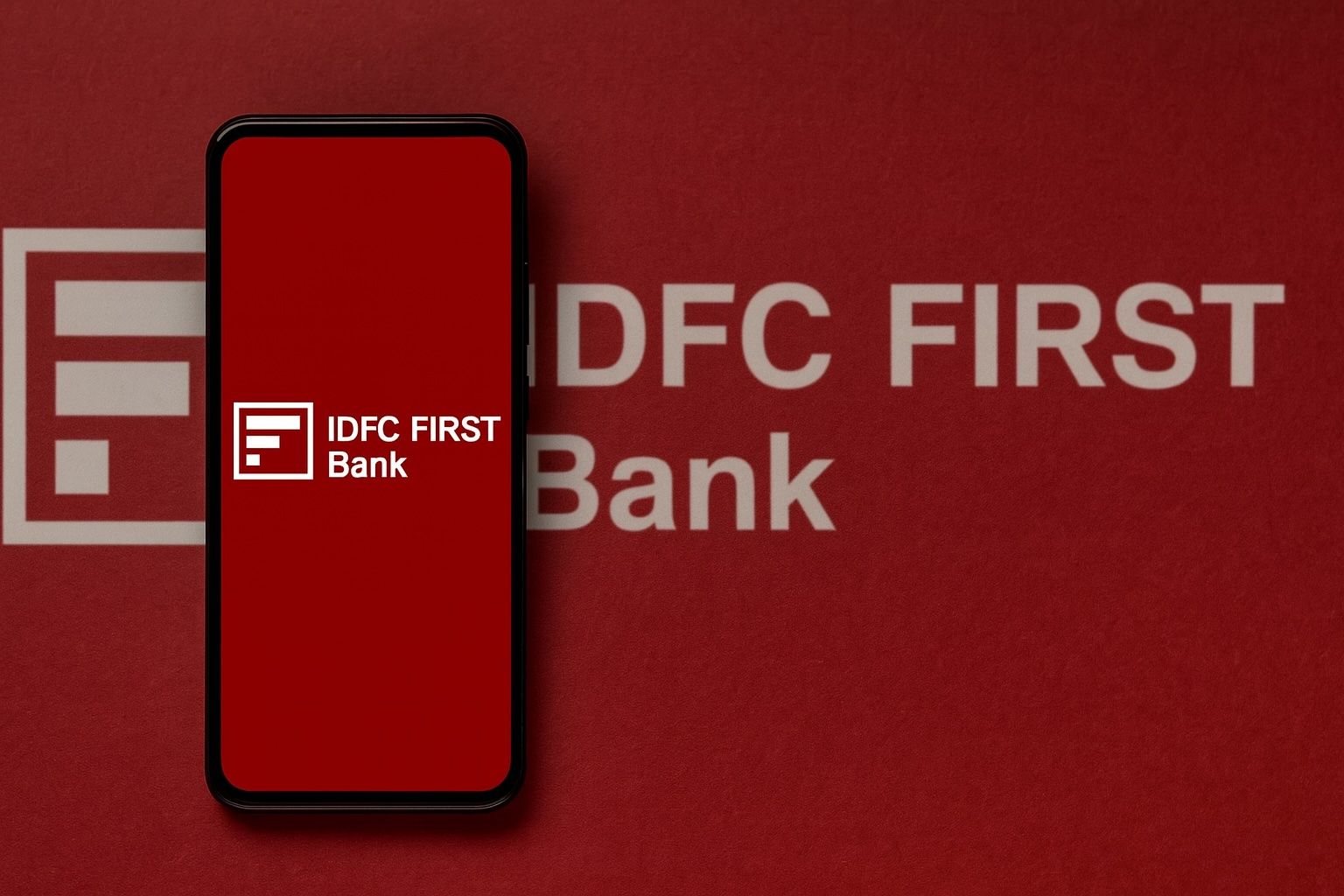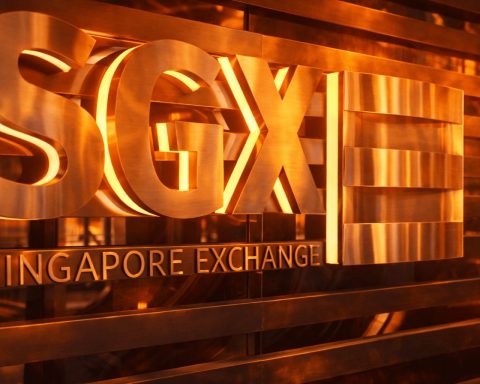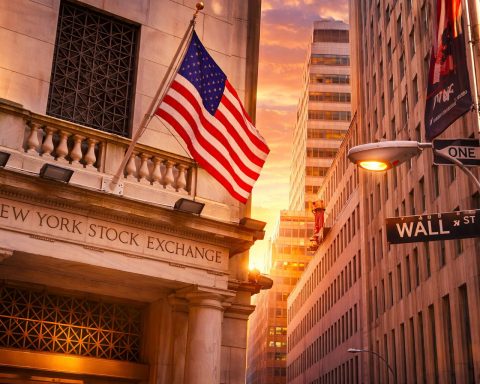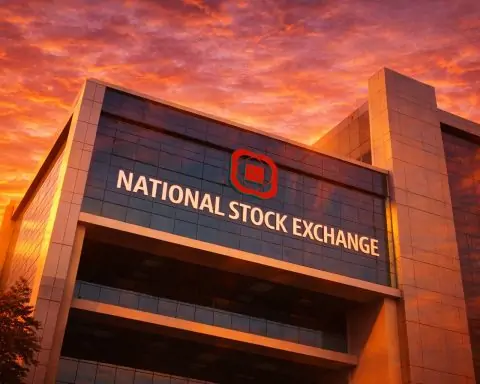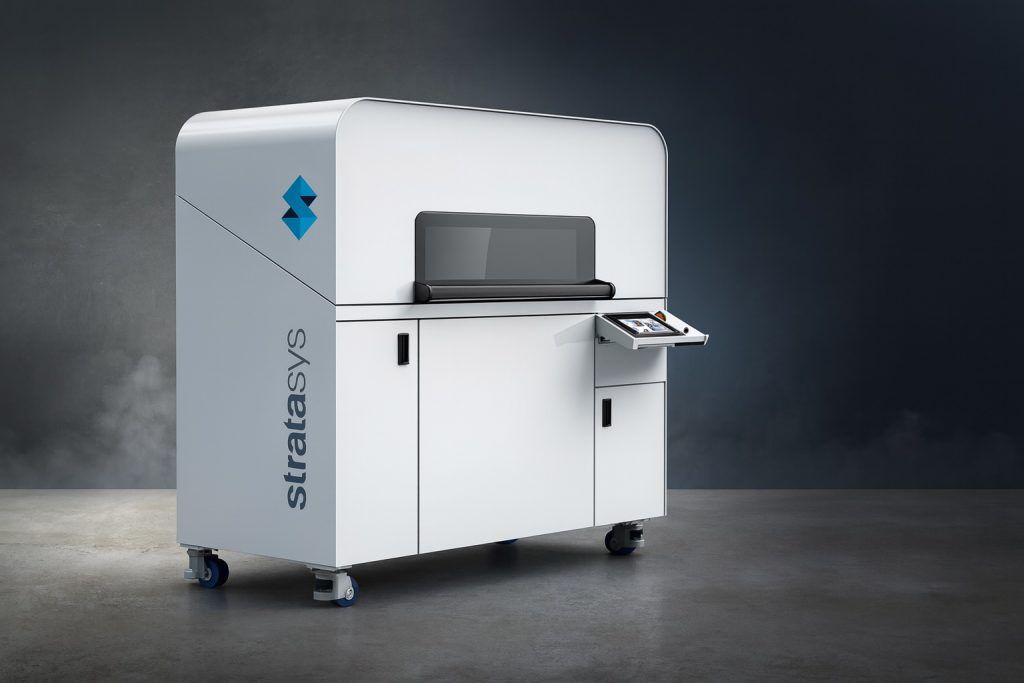- Shares Rally on Earnings Beat: IDFC First Bank’s share price jumped nearly 7% to around ₹77 on October 20, 2025 (near a 52-week high) after the bank’s Q2 FY26 net profit surged 75.5% year-on-year – marking one of the biggest stock gains among private banks this season [1] [2].
- Robust Q2 Results: July–September earnings showed standalone net profit of ₹352.3 crore (up 75.5% YoY) on total interest income up ~11%. Net interest income (NII) grew 6.8% YoY to ₹5,113 crore, while asset quality remained stable with gross NPAs at 1.86% and net NPAs at 0.52% [3]. Loans and customer deposits each rose around 20% YoY, underscoring strong business momentum.
- Bullish Analyst Targets: Brokerages remain optimistic. Jefferies reiterated a Buy and raised its price target to ₹85 (from ₹82) post-results [4]. According to Refinitiv data, the stock carries an average “Buy” rating from 18 analysts with a median target around ₹80, indicating modest upside from current levels [5].
- 15% Upside Seen in One Year: HDFC Securities’ Diwali 2025 Muhurat Trading pick is IDFC First Bank – the analyst expects about 15% share price gain by next year (target ~₹88.5) as the bank’s business model transformation boosts margins and growth [6] [7]. The bank’s increasing retail focus and lower credit costs are projected to drive strong profit expansion.
- Management Signals Confidence: CEO V. Vaidyanathan noted that microfinance stress “looks like it is behind us” and emphasized steady asset quality (GNPA 1.86%, NNPA 0.52%). He expects the cost of funds to drop further, given improving operating leverage, and is confident the bank can sustain its current growth trajectory [8].
IDFC First Bank Share Price Skyrockets on Strong Q2 Earnings
IDFC First Bank’s stock has been on a tear, soaring about 7% in a single session after the lender delivered stellar Q2 FY2025-26 results. On October 20, the share price hit approximately ₹77 – its highest level in nearly 11 months – as investors cheered a 75% jump in quarterly profit [9]. This upbeat earnings surprise sparked a rally that far outpaced the broader market and peer banks. In fact, IDFC First was the top gainer among major private lenders following the Q2 results: its ~5–7% surge on the day eclipsed gains in Yes Bank (+2.3%) and HDFC Bank (+1.7%), while ICICI Bank’s shares fell ~2.5% despite that bank posting profit growth [10]. The exuberant reaction has brought IDFC First’s stock within touching distance of its 52-week high of around ₹78.5 [11] [12], prompting investors to ask – what’s driving this bank’s outperformance, and can it continue?
Q2 Earnings at a Glance: Profits Soar, Asset Quality Steady
The trigger for the latest rally was IDFC First Bank’s strong July–September (Q2 FY26) earnings, which handily beat street expectations. Net profit surged to ₹352.3 crore, up 75.5% year-on-year, fueled by robust core operating performance [13]. The bank’s net interest income (NII) – essentially income from lending after interest expenses – rose to ₹5,113 crore, marking ~6.8% YoY growth [14]. Total interest earned grew even faster (~11%), indicating healthy loan book expansion.
Notably, IDFC First managed this profit jump despite a slight moderation in net interest margins due to higher funding costs. Its Q2 net interest margin came in around 4.3% (down just 4 bps sequentially) [15], which the bank described as a “limited compression” given the rising deposit rates in the industry. Crucially, asset quality remained solid – a key comfort for investors. Gross non-performing assets stood at 1.86% of loans and net NPA at 0.52%, virtually unchanged from last quarter [16]. This stability suggests that earlier concerns around bad loans (particularly in the microfinance segment) are easing. In fact, CEO V. Vaidyanathan highlighted that “the stress in the MFI [microfinance] business… looks like it is behind us,” affirming that outside of the microfinance book, the bank’s asset quality has been “stable for over a decade through cycles” [17].
Business growth was another highlight. IDFC First’s total customer loans grew ~19.7% year-on-year to ₹2.66 lakh crore, while customer deposits jumped 23.4% to ₹2.69 lakh crore [18] [19]. The coveted low-cost CASA deposits rose ~27% YoY, nudging the CASA ratio above 50% [20] – a sign of a growing retail franchise. Such growth outpaced many larger rivals and underscores management’s focus on expanding the bank’s reach. The strong deposit inflows also helped ease funding cost pressures, with the cost of funds dipping by 23 bps YoY [21]. Vaidyanathan noted that with liquidity improving, “we expect [cost of funds] to drop from here on”, which should support future margins [22].
Market and Analyst Reactions: Upgrades Amid Optimism
The stellar Q2 numbers prompted an immediate reaction on Dalal Street – not just in the share price, but also from market experts. Brokerages and research houses broadly welcomed the results, citing IDFC First’s improving earnings trajectory and reassuring asset quality metrics. Jefferies India quickly reiterated its bullish stance, maintaining a “Buy” rating on the stock. The global brokerage was encouraged by the sequential drop in microfinance delinquencies and the bank’s operating leverage gains. Jefferies raised its price target to ₹85 (from ₹82), implying further upside of around 10% from the current levels [23].
Other analysts echoed the positive sentiment. Emkay Global maintained an “add” rating, expecting “asset quality recovery to accelerate in H2 FY26” as pandemic-era stress fully recedes [24]. Centrum Broking – which had been more cautious – acknowledged that earnings improvement is now in sight given the bank’s lower credit costs and steady NIM, according to Moneycontrol’s report. Even Motilal Oswal (MOSL), which has historically been neutral on IDFC First, noted the latest results show that “asset quality stress appears to have peaked and earnings are likely to gather pace.” MOSL’s last published stance in late September was Neutral with a fair value around ₹80 [25] [26], but the firm indicated it is watching the post-result improvements closely.
Importantly, the broader analyst consensus on IDFC First Bank has turned decidedly bullish over the past year. Reuters data show 18 analysts cover the stock with an average recommendation of “Buy”. The median 12-month price target is about ₹80 [27], which is roughly 4% above the current market price – suggesting limited, but positive, upside as per consensus. However, several experts have far higher targets reflecting longer-term conviction. For instance, Investec had upgraded IDFC First to Buy back in July 2025, citing the bank’s “major transformation” toward retail banking. Investec set a target price of ₹90 (up from ₹65 earlier) – a 38% hike – projecting a 29% CAGR in core pre-provision operating profit through FY2028 as costs decline and margins expand [28] [29]. That target implies nearly 17% upside from today’s price, suggesting that some analysts see the stock’s rally as far from over.
Short-Term Outlook: Near-Term Drivers and Muhurat Pick
In the near term, market watchers believe IDFC First Bank’s stock could consolidate its recent gains but has room to climb further on the back of its strong fundamentals. The immediate catalyst – Q2 earnings – has validated the bank’s growth story, and this momentum could carry into the next few quarters. The stock’s nearly 7% single-day jump on Oct 20 brought it close to the ₹78.50 yearly high, which may act as a resistance. If the stock breaks above its 52-week high, technical analysts note it could trigger additional buying. “Breaking above these resistance levels could trigger a rapid influx of capital,” an ET Now analysis noted, referring to the importance of new highs for attracting momentum traders [30] [31]. Conversely, some profit-booking is possible given the sharp run-up.
Despite those technical considerations, fundamental news flow remains largely in favor of the bank. The Q2 results season for banks has generally been strong, and IDFC First’s numbers stand out even in a crowded field. The lender is also set to benefit from sector tailwinds – for example, festive-season credit demand and spending (around Diwali) typically boosts banks’ retail loan growth in Q3. Furthermore, this week marks the auspicious Muhurat trading session (on Oct 21, coinciding with Diwali), when many investors make new stock purchases for the Hindu New Year. Notably, IDFC First Bank has been singled out as a top Muhurat pick by at least one brokerage. HDFC Securities’ analyst Devarsh Vakil handpicked IDFC First as a one-year buy in his Samvat 2082 recommendations, highlighting that the bank’s business model revamp and retail expansion will likely “expand margins, while borrowing and credit costs decline” – fueling profit growth [32] [33]. Vakil set a target of ₹88.5 for the stock by next Diwali 2026 [34] [35], about 15% above the latest price. Such endorsement during the Muhurat trading period has drawn additional attention to the stock in market chatter.
Another point in the bank’s favor in the short term is improving investor sentiment toward mid-sized private banks. IDFC First’s market capitalization, around ₹62,000 crore (approximately $7.5 billion) [36], places it in the mid-tier of listed banks – smaller than giants like HDFC or ICICI, but with far more room to grow rapidly. In recent sessions, mid-cap bank stocks have seen renewed buying interest on strong earnings. For instance, Federal Bank and AU Small Finance Bank shares leapt ~7–8% after they posted robust Q2 results [37]. This sector-wide re-rating, combined with IDFC First’s own performance, could keep the stock buoyant. “Indian banks’ stocks rallied 4–18% during afternoon trade after strong Q2 earnings, ahead of Diwali holidays,” reported Moneycontrol [38]. In that rally, IDFC First was among the notable gainers, and the Nifty Bank index hit record highs, reflecting investors’ bullishness on banking names.
Long-Term Growth Story and Risks
Zooming out beyond the immediate quarter, IDFC First Bank’s long-term story appears compelling but not without challenges. The bank is in the midst of what management calls a “major transformation” – over the past few years it has shifted from an infrastructure-focused lender (the legacy of IDFC Ltd) to a consumer and retail banking-centric model. This involved expanding its branch network, ramping up retail loan products (like home loans, credit cards, vehicle loans), and improving its deposit franchise. According to HDFC Securities, these efforts are bearing fruit as seen in the rising CASA ratio and moderating cost-to-income ratio [39] [40]. The cost-to-assets has been trending down by about 80 bps, and analysts project further improvement as technology investments and branch scale-up start yielding operating leverage [41]. In H1 FY26, IDFC First’s total business (loans + deposits) grew 21.6% YoY, whereas operating expenses grew only 11.8% – a positive gap indicating operating leverage gains [42]. “We hope to sustain this trend,” said CEO Vaidyanathan, highlighting management’s focus on efficiency [43].
For investors with a longer horizon, a few factors stand out:
- Earnings Trajectory: With Q2’s profit spike, IDFC First has now delivered a string of profitable quarters, leaving behind the losses incurred during its initial merger years. Brokerage Jefferies sees earnings momentum building into FY26-FY27, supported by credit cost normalization and steady NIM. They and others expect the bank’s Return on Assets (RoA) to improve toward ~1.2–1.3% by 2027, up from ~0.5% a year ago [44] – a significant leap that would put IDFC First closer to peer benchmarks. Achieving this will require maintaining low bad loan formation and keeping operating costs in check, even as business expands.
- Growth vs. Large Banks: IDFC First’s agility as a smaller bank allows it to grow faster than industry leaders. Its ~20% loan growth is well above the ~10% YoY loan growth reported by HDFC Bank in Q2 [45] and the single-digit growth of some PSU banks. Market experts like Prashanth Tapse of Mehta Equities observe that on a combination of growth and fundamentals, “IDFC First Bank emerged as the performer [this quarter], while HDFC Bank remains the benchmark for stability at scale.” [46] The trade-off is that IDFC First, being smaller, still has to prove its model through an economic cycle. Larger banks enjoy economies of scale and more cushion against shocks; by contrast, IDFC First trades at around 1.3–1.6 times book value [47] [48] – a valuation that prices in high growth but could be tested if growth falters.
- Macroeconomic Environment: The broader economic backdrop in India is currently favorable for banks. Interest rates appear to have peaked and even started to decline in 2025 – the Reserve Bank of India cut the repo rate by 100 bps earlier in the year and held it at 5.50% in the October 2025 policy, with a neutral stance [49]. With inflation hitting an 8-year low (1.5% in September), the RBI has cut its 2025-26 inflation forecast to 2.6% and hinted at room for future rate cuts to support growth [50] [51]. This benign outlook could benefit banks like IDFC First by lowering funding costs and boosting credit demand – indeed, the RBI also revised up FY26 GDP growth forecast to 6.8%, citing strong consumption and investment [52]. However, a falling rate environment can compress banks’ margins in the short run (as older high-yield loans reprice down). IDFC First has already seen NIM come off highs as deposit rates rose; further margin trajectory will depend on how quickly it can replace expensive borrowings with low-cost deposits. The CEO has expressed confidence that the bank’s cost of funds will keep declining due to its growing deposit base [53]. Investors will watch upcoming RBI moves and the bank’s margin guidance closely.
- Asset Quality and Capital: So far, IDFC First has navigated the post-COVID period well, with stable asset quality metrics and even a reduction in microfinance delinquencies. The gross slippage ratio improved this quarter (3.39% excluding the MFI book, down from 3.54% in Q1) [54]. Nonetheless, maintaining asset quality is paramount as the bank lends aggressively in retail segments. Any uptick in defaults (for instance, if interest rates rise again or economic conditions worsen) could alter the rosy profit projections. On capital adequacy, the bank’s capital buffers are adequate for now (Tier-1 capital ratio was ~13.5% as of June 2025 per investor presentations), but high growth will eventually require capital raising to sustain. The market will monitor if and when the bank plans an equity raise to fuel expansion, which could dilute shareholders if not managed at a high valuation.
Overall, the long-term trajectory appears positive. IDFC First’s stock has rewarded patient investors: it is up about 20% year-to-date in 2025, and an impressive +143% over the past five years [55], vastly outperforming many established bank stocks in percentage terms. This reflects the market’s belief in the turnaround led by CEO Vaidyanathan, who took over in 2018 when IDFC Bank merged with Capital First. Under his leadership, the bank pivoted to retail and consistently improved its liability franchise and cost ratios. That said, competition in retail banking is fierce – heavyweights like HDFC Bank, ICICI Bank, Axis Bank, and even new-age fintech-led banks are all vying for the same customers. IDFC First will need to leverage its tech offerings, customer service, and innovative products to continue gaining market share.
The Road Ahead: Can the Rally Sustain?
After its recent spike, IDFC First Bank’s share price sits at a critical juncture. The consensus of expert opinion is that the stock’s rally is grounded in fundamentals – a strong earnings upswing, encouraging guidance, and supportive sector conditions. Near-term news flow is largely positive, with the festive season likely to keep credit growth robust and policy rates stable or trending lower. Many analysts have upgraded targets, but even the most bullish near-term targets (₹85–90) are not drastically higher than the current price (~₹77). This suggests that while upside exists, the market has priced in a good chunk of the recent good news. To climb further from here, the bank may need to deliver consistently in coming quarters – sustaining 20%+ business growth, improving its margins, and hitting the projected reduction in costs and bad loans.
On the flip side, downside risks appear relatively contained at the moment. The stock’s sharp rise could invite some volatility, but any broader market correction or risk-off sentiment in banks (for instance, due to global events) would likely be temporary given IDFC First’s improving fundamentals. Investors will be watching the upcoming Q3 FY26 results (due in January) and management’s commentary on progress. Key things to monitor include deposit growth (to fund loans), trajectory of the net interest margin, and any commentary on merger synergies (there has been past talk of merging parent IDFC Ltd with the bank, which if finalized could boost the capital base).
In summary, IDFC First Bank has emerged as a rising star in India’s banking sector in 2025, shaking off past challenges with a standout quarter. The stock’s ~7% jump post-earnings underscores renewed investor confidence. Expert opinions suggest this confidence is well-placed – with multiple analysts forecasting further gains and improved financial performance ahead. Yet, as with any bank, execution will be key. As the bank continues its growth streak, investors will look for confirmation in the upcoming quarters that this is not just a one-off festive spark but a sustainable flame. For now, the mood around IDFC First Bank is decidedly upbeat, and many will be watching closely to see if it can deliver on the high expectations and perhaps chart a course toward becoming the next big success story in Indian banking.
Sources: IDFC First Bank Q2 FY26 results and share price data [56] [57]; Analyst commentary from Moneycontrol, ET Now and Mint [58] [59] [60]; CEO Vaidyanathan’s quotes on asset quality and outlook [61]; RBI policy context from Reuters [62] [63]; ts² TechStock daily market report for Oct 20, 2025 [64]. All information is up to date as of October 21, 2025.
References
1. www.moneycontrol.com, 2. www.livemint.com, 3. www.moneycontrol.com, 4. www.moneycontrol.com, 5. www.moneycontrol.com, 6. www.etnownews.com, 7. www.etnownews.com, 8. www.business-standard.com, 9. www.moneycontrol.com, 10. www.livemint.com, 11. www.business-standard.com, 12. www.business-standard.com, 13. www.moneycontrol.com, 14. www.moneycontrol.com, 15. www.livemint.com, 16. www.moneycontrol.com, 17. www.business-standard.com, 18. economictimes.indiatimes.com, 19. economictimes.indiatimes.com, 20. economictimes.indiatimes.com, 21. economictimes.indiatimes.com, 22. www.business-standard.com, 23. www.moneycontrol.com, 24. www.moneycontrol.com, 25. www.business-standard.com, 26. www.business-standard.com, 27. www.moneycontrol.com, 28. www.moneycontrol.com, 29. www.moneycontrol.com, 30. ts2.tech, 31. ts2.tech, 32. www.etnownews.com, 33. www.etnownews.com, 34. www.etnownews.com, 35. www.etnownews.com, 36. www.business-standard.com, 37. www.moneycontrol.com, 38. www.moneycontrol.com, 39. economictimes.indiatimes.com, 40. www.business-standard.com, 41. www.moneycontrol.com, 42. www.business-standard.com, 43. www.business-standard.com, 44. www.moneycontrol.com, 45. www.livemint.com, 46. www.livemint.com, 47. www.business-standard.com, 48. www.business-standard.com, 49. www.reuters.com, 50. www.reuters.com, 51. www.reuters.com, 52. www.reuters.com, 53. www.business-standard.com, 54. www.business-standard.com, 55. www.etnownews.com, 56. www.moneycontrol.com, 57. www.moneycontrol.com, 58. www.moneycontrol.com, 59. www.etnownews.com, 60. www.livemint.com, 61. www.business-standard.com, 62. www.reuters.com, 63. www.reuters.com, 64. ts2.tech
